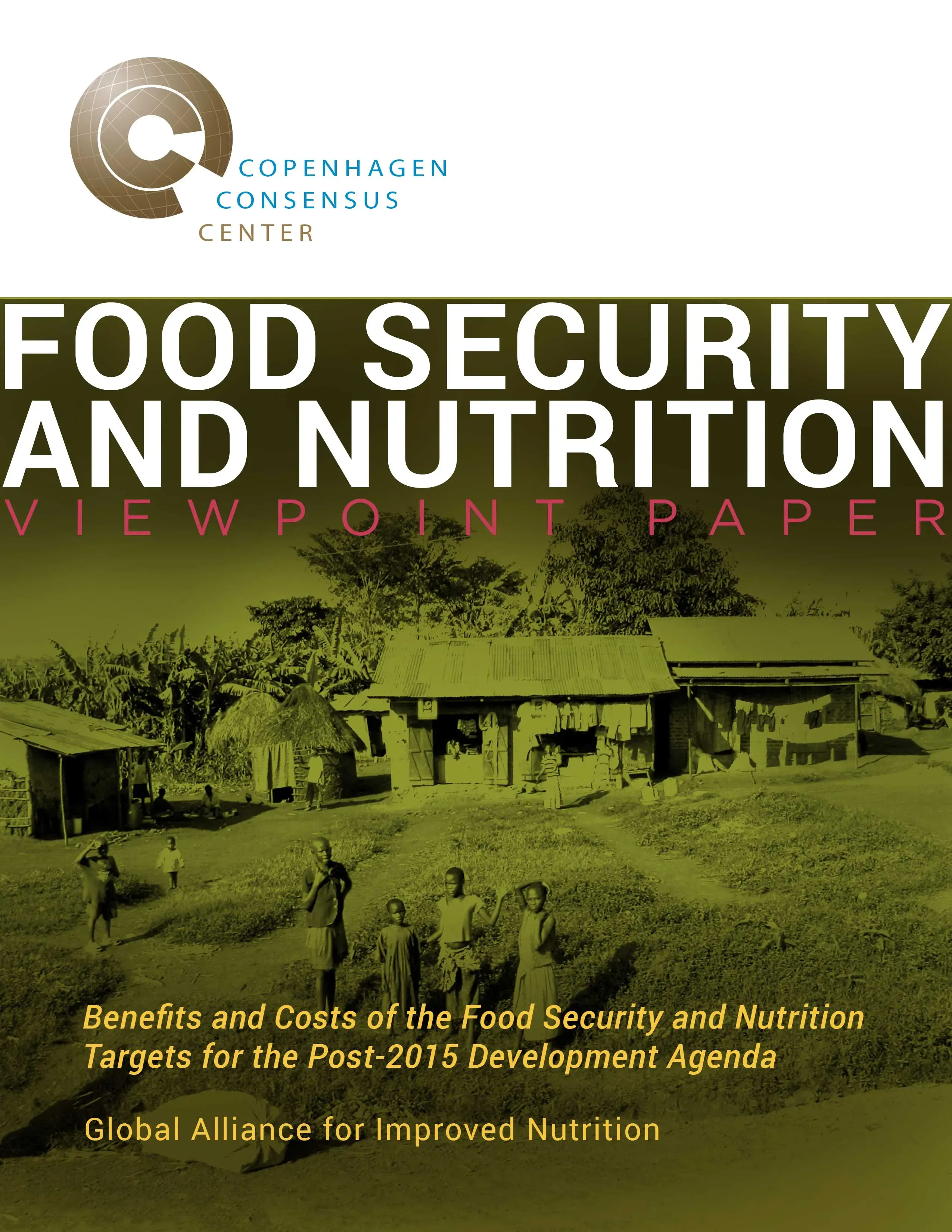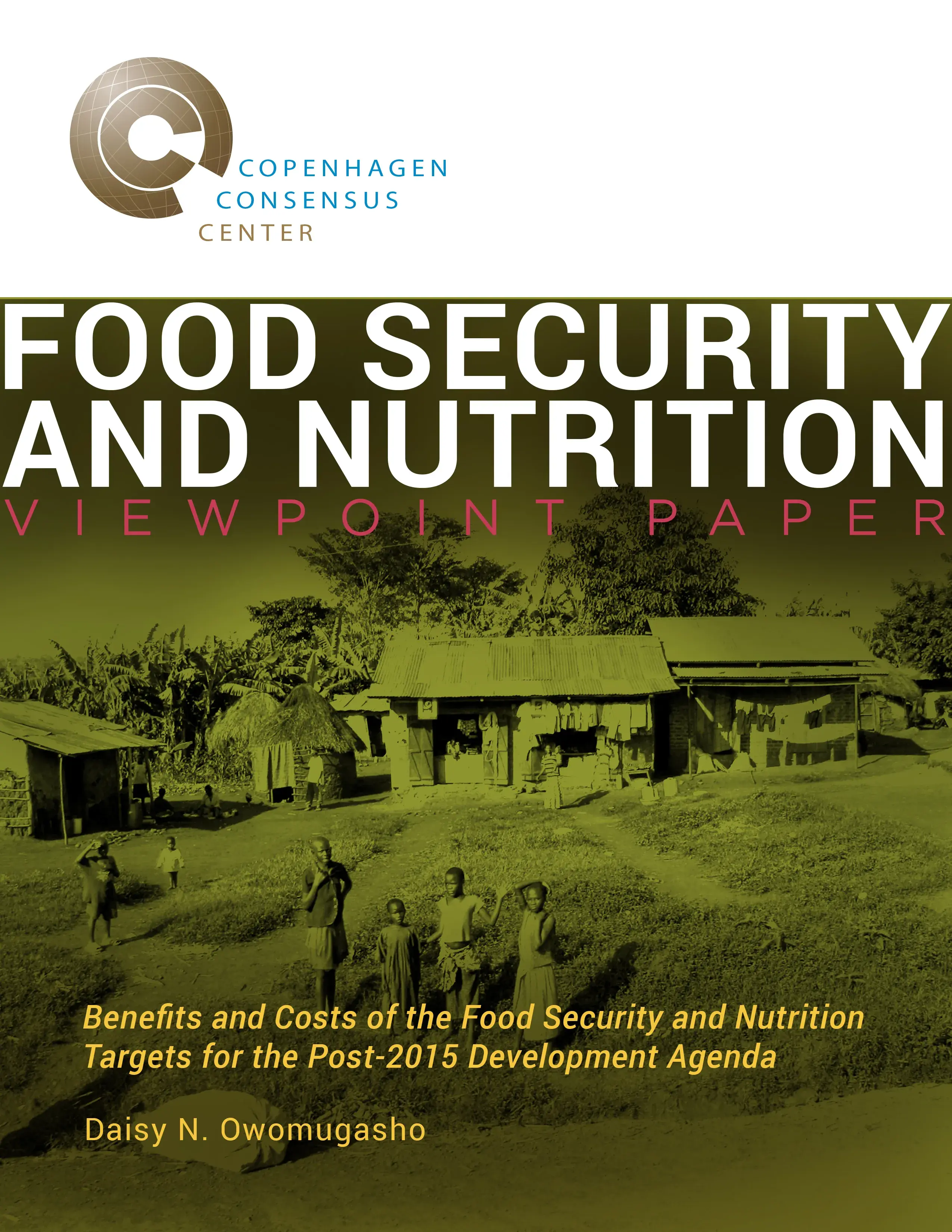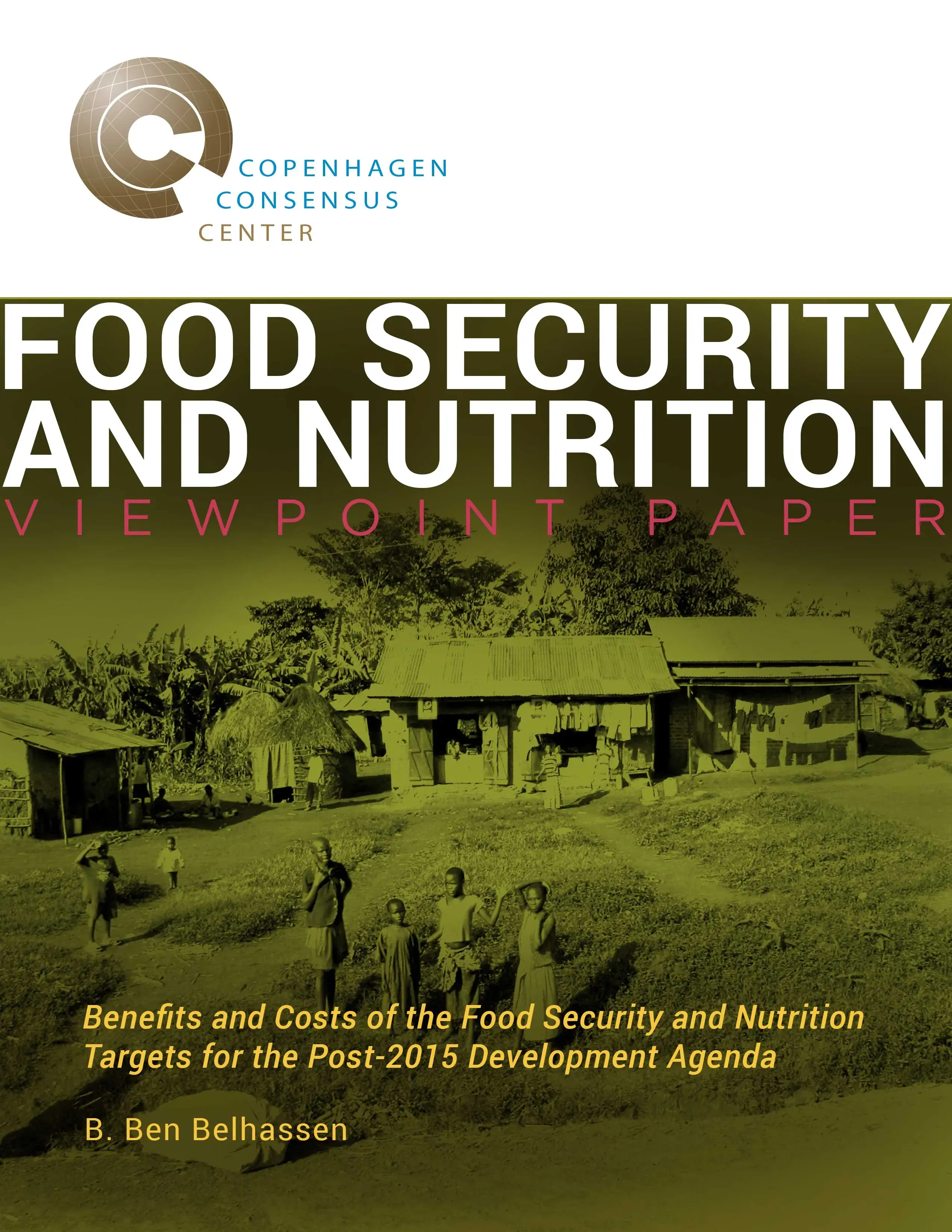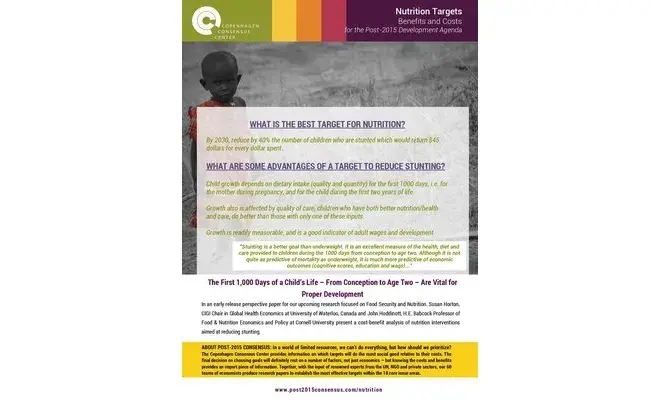Nutrition
Nutrition has always been a key development indicator. Good nutrition allows for healthy growth and development of children, and inadequate nutrition is a major contributing factor to child mortality. Good nutrition is also important for cognitive development, and hence educational success, both of which are important determinants of labour productivity and hence economic growth. Good nutrition also implies balance – neither undernutrition nor overnutrition.
Over the decade or so since the MDGs were set, our understanding of undernutrition and its measurement has advanced further. Underweight (weight for age) is a composite measure, which aggregates two different aspects of undernutrition, namely weight for height (or wasting, a measure of current nutritional status) and height for age (or stunting, a measure of long-run nutritional status).
The underweight goal has served its purpose to focus attention on nutrition. Going forward we can improve on the original MDG target by using stunting as an indicator of nutrition status rather than underweight.
Summary - Benefit for Every Dollar Spent by Country for stunting target - By 2030, reduce by 40% the number children who are stunted.
Note - Categorized by discount rates and final working ages.
| Benefits to Age 36 | Benefits to Age 50 | Benefits to Age 60 | ||||
|---|---|---|---|---|---|---|
| Country | 3% | 5% | 3% | 5% | 3% | 5% |
| DRC | $7 | $4 | $12 | $5 | $15 | $5 |
| Madagascar | $19 | $10 | $34 | $13 | $43 | $14 |
| Ethiopia | $21 | $11 | $37 | $14 | $46 | $15 |
| Nepal | $25 | $13 | $45 | $17 | $56 | $18 |
| Uganda | $26 | $13 | $45 | $17 | $56 | $18 |
| Tanzania | 29 | $15 | $51 | $20 | $64 | $20 |
| Burma | $34 | $17 | $60 | $23 | $75 | $24 |
| Kenya | $34 | $17 | $60 | $23 | $75 | $24 |
| Bangladesh | $35 | $18 | $62 | $24 | $78 | $25 |
| Sudan | $45 | $23 | $80 | $31 | $100 | $32 |
| Nigeria | $48 | $24 | $85 | $32 | $106 | $33 |
| Yemen | $56 | $29 | $100 | $38 | $124 | $40 |
| Pakistan | $57 | 29 | $101 | $39 | $126 | $40 |
| Vietnam | 69 | 35 | $123 | $47 | $154 | $49 |
| India | $76 | $39 | 134 | $51 | $168 | $53 |
| Philippines | 86 | $44 | 153 | $58 | $190 | $60 |
| Indonesia | $94 | $48 | $166 | $64 | $207 | $65 |

Advantages of the Stunting Target
- Child growth depends on dietary intake (quality and quantity) for the first 1000 days, i.e. for the mother during pregnancy, and for the child during the first two years of life.
- Growth also depends on health status, and is affected by improvements in sanitation and reduced infection.
- Growth also is affected by quality of care, and children who have both better nutrition/health and care, do better than those with only one of these inputs.
- Hence growth is a good indicator of the quality of the early life environment; Growth is readily measurable (although it relies on reasonably good age data), and is less invasive than nutrition indicators which require samples of bodily fluids.
- Child height at age two is a good predictor of achieved adult height.
- Achieved adult height is associated with wages: from a survey of 8 high income countries (Gao and Smyth, 2010) the median increase of hourly wages per 1 cm of additional height was 0.55%; and from a survey of 8 low and middle income countries, the median was 4.5% (Horton and Steckel, 2013).
- Achieved adult height also tracks economic development quite well (Figures 1, 2 and 3 from Horton and Steckel, 2013, which show that height tracks the economic “takeoff” for a range of countries).
Scroll down to read our set of reports examining nutrition targets for the post-2015 development agenda, written by leading economists and experts.
Nutrition Perspective
Susan Horton, CIGI Chair in Global Health Economics at University of Waterloo, Canada, and John Hoddinott, International Food Policy Research Institute and Cornell University present a cost-benefit analysis of nutrition interventions. The outcome document of the Open Working Group calls for the adoption of two WHO nutrition goals on stunting and wasting:
- Reduce by 40 per cent the number of children under 5 who are stunted.
- Reduce and maintain childhood wasting to less than 5 per cent.
Ultimately, the paper argues that addressing stunting in children is an ideal target for the post-2015 development agenda.
Stunting is a better goal than underweight. It is an excellent measure of the health, diet and care provided to children during the 1000 days from conception to age two."
- Susan Horton and John Hoddinott

Viewpoint Paper
Writing on behalf of Global Alliance for Improved Nutrition, Rebecca Spohrer welcomes the argument by Horton and Hoddinott that reducing stunting is not only a more meaningful target than underweight, but also extremely cost-effective. However, stunting is just the tip of the iceberg of the overall problem.
While a stunting-reduction goal is fundamental to improving nutrition in the next fifteen years, it is not enough to guarantee success. There is still much to be done to ensure that nutrition is positioned within the post-2015 development agenda as a multi-sectorial issue with strong return on investments.”
– Rebecca Spohrer

Viewpoint Paper
The nutrition focused viewpoint of Daisy N. Owomugasho, Country Director, The Hunger Project Uganda argues that, rather than stunting, underweight is the most appropriate indicator for nutritional assessment as it provides for both weight for age and height for age nutritional indicators that allow for both acute and chronic nutrition status.
Stunting as a measure negates the genetic predisposition of communities as a result of primordial genetic makeup or by influences of the environment/adaptation or lifestyle. For example the Batwa and Bakonjo tribes in Uganda are generally short in stature; therefore utilizing stunting as a measure of nutritional status would regard the entire community / region ‘falsely’ undernourished; if not comprehensively then at average.
- Daisy N. Owomugasho

Viewpoint Paper
B. Ben Belhassen’s viewpoint paper discusses food security, nutrition and sustainable agriculture in a broader context. Stating that the MDGs’ exclusive focus on the vital issue of reducing hunger unfortunately left many facets of food security unnoticed. However, targets under proposed Goal 2 of the SDGs address the crucial access dimension of food security, the entire spectrum of malnutrition, the productivity and incomes of smallholder farmers, resilience of food production systems and the sustainable use of biodiversity and genetic resources.

The Post-2015 Consensus project brings together 60 teams of economists with NGOs, international agencies and businesses to identify the targets with the greatest benefit-to-cost ratio for the UN's post-2015 development goals.





